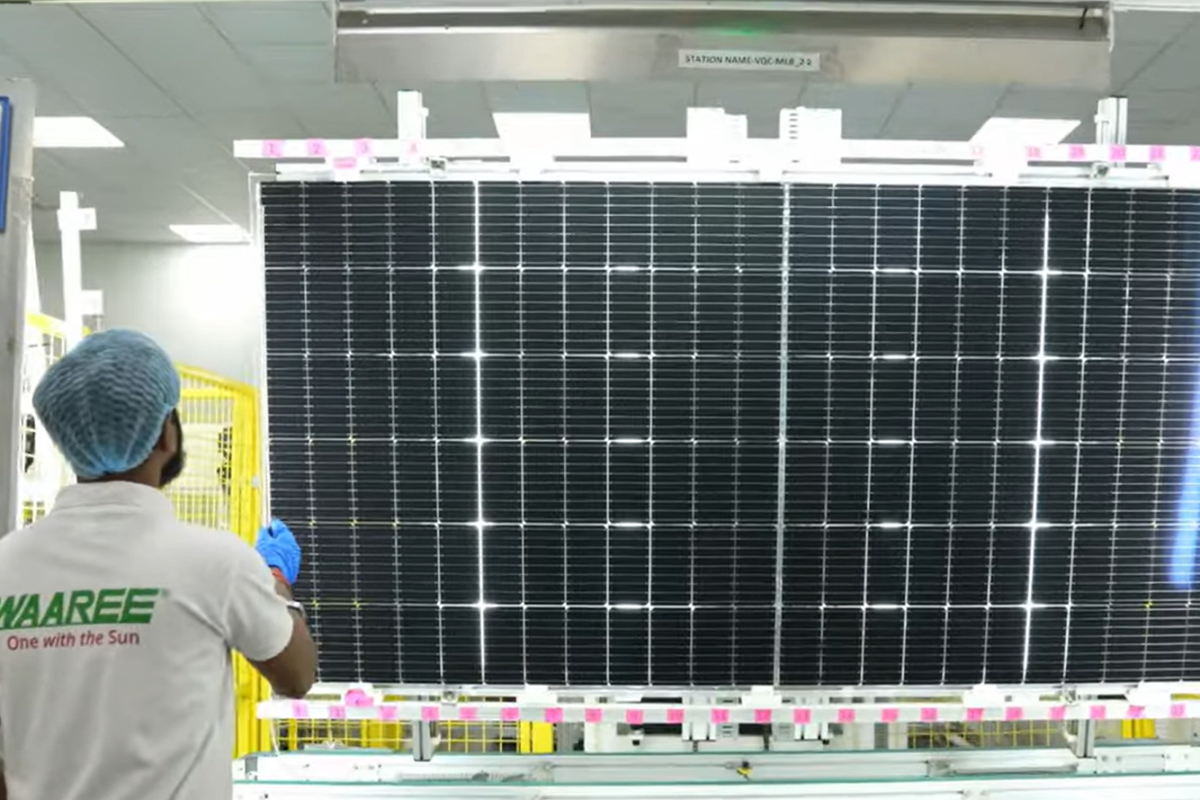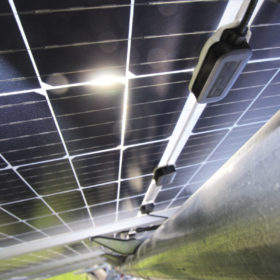From: pv magazine, December edition
Revolutions in lithium-ion (Li-ion) chemistries and ground-breaking flow batteries are fighting head-to-head with hydrogen for corporate investment. Everyone is looking to disrupt, with applications from high energy to high power, from long duration to frequency control, displacing diesel gensets or gas peakers. This article assesses developments and business models from a wider perspective, including battery tech investors and new entrant solar system integrators. Taking the role of infrastructure drinks mixer, we ask: Will combined storage and PV emerge as a refreshing investment blend, or a toxic technology cocktail?
Surge in new investor types
There is plenty of money around. VC funding for battery storage related investments amounted to $539 million in the first half of 2018, according to Mercom. This is a 12% increase from 2017, but scattered over ever more deals, 29 in total. This is on top of the increasing number of undisclosed M&A deals, and of course, research funds made available to new innovative ideas.
Typical investors have so far been VC arms of large energy firms, such as Shell Ventures, or Asian technology conglomerates, such as Samsung. However, there is now a sudden surge of new investor groups. Financial investors are increasing their presence on the global battery playing field. For example, this year a total of $80 million was invested in battery software services company Stem by the Ontario Teachers’ Pension Plan and Singaporean investment company Temasek. Both have previously invested in solar PV.
The solar arm of leading Thai coal player Banpu has taken a stake in New Resources Technology, a Singaporean energy storage startup. The industry is clearly going through a growing-up phase similar to that which solar underwent. Even project finance is reluctantly, but increasingly, pouring into battery projects.
The industry is not only following a similar path to solar, it is also closely linked to it. Large renewable IPPs develop or buy utility-scale PV + storage projects displacing diesel gensets around the world. Some solar players are even screening investment opportunities in companies for the sole purpose of securing their own growing battery supply needs. So, what are the key questions these new types of investors ask at the beginning of a project or even for a corporate due diligence?
Is lithium-ion a safe bet?
Yes and no. Li-ion is still the dominant chemistry on the market with plummeting costs. Most are comfortable with the strong demand predictions for many years to come. So, for project investors Li-ion batteries seem to be the best bet today.
However, VC investments in the first half of 2018 also covered many other chemistries and storage technologies. Investors seeking a stake in a company need to look deeper. On the one side there are battery technologies that include various chemistries such as Li-ion (nickel-manganese-cobalt, silicon anodes, etc.), sodium sulphur, and flow batteries. Then there are fuel cells which involve hydrogen or methanol. Finally, other technologies such as thermal, compressed air energy storage (CAES), liquid air, or flywheels can also fulfill storage needs.
The competition is far from over. Groundbreaking research results are announced on a seemingly weekly basis, claiming drastic cost reductions or increasing life cycles. But what about sustainability and health considerations? Lithium-ion batteries have well-publicized issues related to current recycling and mining practices.
It is not yet economically viable to recover lithium from old batteries – the cost of mined lithium is lower. And recycling processes vary depending on the different battery types.
What if Li-ion follows a similar path to silicon in PV?
Crystalline silicon (c-Si) has been considered an intermediate technology from early on, soon to be replaced by thin film or other new breakthrough developments. These expectations have in reality been confounded, and c-Si endures. In energy storage, Li-ion has benefited from technology improvements and scale effects, thanks largely to investments from the automotive sector. This has left limited market share for competing technologies to date. Whilst Li-ion is the go-to product for now, if its supply chain fails to address sustainability concerns or the cost curve stalls, there is potential for disruptive technologies to make a much bigger dent in its dominant market share.
What if a new innovation claims to halve battery costs?
It is hard to beat Li-ion’s ongoing cost reductions. Despite current overcapacity, recent announcements by leading supply chain players such as BYD, CATL, and LG Chem show that new production lines of Li-ion based batteries are being set up and existing lines are being expanded all over the world. Li-ion prices have plummeted to less than one third over the last six years, and they are expected to drop a further two thirds to as little as $73/kWh in 2030, as per the latest BNEF 2017 predictions. Investors need to be wary of declarations claiming that the new technology is able to compete with Tesla and ready to disrupt the market.
Should investors look for a ‘Swiss army knife’ or one application?
The answer is rather complex. When solar project sponsors approach this question, their natural instinct is to look for a battery – a solution which can cope best with the pattern of the sun, store energy for many hours during the day, and discharge overnight. Sizing a battery to match this peak requirement to date has meant paying a hefty sum for extra capacity which is rarely used. Hence the main usage for batteries in grid-connected environments has been frequency response or ancillary services rather than for arbitrage. The benefits of co-locating with a renewable energy plant have mainly come from savings on development, balance of plant, and grid-connection costs.
But the duck curve effect of solar is a key driver for further market development. Longer duration batteries (>4 hours) will reach commercialization in the next couple of years, even >8 hours are not ruled out. With these, storage can even take on peaker roles, so grid operators can maintain gas resources for those prolonged peaks that batteries would not meet. The recent Pacific Gas & Electric Company tender in California for four gas peaker replacement projects using batteries is paving the way for this trend, which will surely follow in other jurisdictions.
Over the next five years, market requirements will continue to lean towards the high power applications, with grid operators pushing the markets towards providing short duration, fast response times and ramp-up rates. However, in the mid-term a market swing from power towards energy can be expected. More mature grid markets for battery storage, for example the U.K. or the U.S., have tended to be kick-started by ancillary services, such as frequency control, but are already transitioning towards capacity services, arbitrage, or similar.
For investors wishing to acquire a stake in an innovative battery company, it is important to assess the clarity of vision of the new product. Selling into a wide range of markets or even trying to take on the niches that big corporates already fill could be a risky approach.
What about big data, AI, and V2G?
The unfolding energy transition is not only impacted by evolving storage solutions and applications, but also the infrastructure needs they entail. Technology-led mega-trends such as smart cities, EV-networks, co-location with renewables, and vehicle-to-grid (V2G) solutions will determine how much of our current infrastructure will be obsolete 10 years from now. Unlike before, where development of different industries was separate, today all things in the flexibility space are connected and influence each other.
The complexity of future systems and the objective of achieving overlapping yet different applications within one asset can have the effect of paralyzing regulatory reform and the development of new laws.
On the plus side, developments in software are clearly breaking new ground, with analytics and machine learning being put to work on data for large PV plants, allowing ever more accurate revenue predictions or health assessments. Artificial intelligence (AI) is, for example, allowing U.S. company Stem to build AI-powered distributed energy storage networks in a more efficient and cost-saving way.
What about my PV-storage investment case right now?
There is no simple answer, and a detailed assessment of each individual case is required. In the end, the PV-battery game is all about revenues and their timing. The real uncertainty for investors lies in achieving a reliable revenue stream in the near term with the carrot of a sky-rocketing upside in the mid-term future.
While revenues for renewables projects with guaranteed tariffs or PPAs are rather safe, the crystal ball gazing required to predict stacked battery revenues and future power curves is something infrastructure investors are still getting used to.
In the case of corporate investment, the analysis goes even deeper. A highly patented product is not sufficient for the success of an overall venture. A plausible business plan detailing market, competitor analysis, technology, patents, costs, commercialization, as well as team capability are the minimum required information to weigh risks against potential returns. While investing in the final stages of a new product development or building up a service provider both appear highly challenging, these investments still bear lower risks than setting up a manufacturing plant or even capitalizing a new luxury resort solely running on PV and storage. The sooner the revenues, the lower the risk, but also the lower the return. Return requirements for less risky PV-battery projects might range in the higher single digits to lower teens. A corporate invest can stretch far beyond 15%, albeit on a shorter investment horizon.
The range of PV-battery investment opportunities is almost bewildering, as are the risks and the level of commitment required. The current enthusiasm of PV-storage players is leading to innovative business models and financial solutions. This might just fill the regulatory void left by governments around the world that are struggling to keep up with the pace of technological change. But whether you work in government or industry, finding the right blend of solutions in this complex and uncertain landscape is no easy task. A skilled drinks mixer is needed, blending quality ingredients with care to deliver a refreshing tonic for thirsty investors.
Ragna Schmidt-Haupt
This content is protected by copyright and may not be reused. If you want to cooperate with us and would like to reuse some of our content, please contact: editors@pv-magazine.com.








4 comments
By submitting this form you agree to pv magazine using your data for the purposes of publishing your comment.
Your personal data will only be disclosed or otherwise transmitted to third parties for the purposes of spam filtering or if this is necessary for technical maintenance of the website. Any other transfer to third parties will not take place unless this is justified on the basis of applicable data protection regulations or if pv magazine is legally obliged to do so.
You may revoke this consent at any time with effect for the future, in which case your personal data will be deleted immediately. Otherwise, your data will be deleted if pv magazine has processed your request or the purpose of data storage is fulfilled.
Further information on data privacy can be found in our Data Protection Policy.